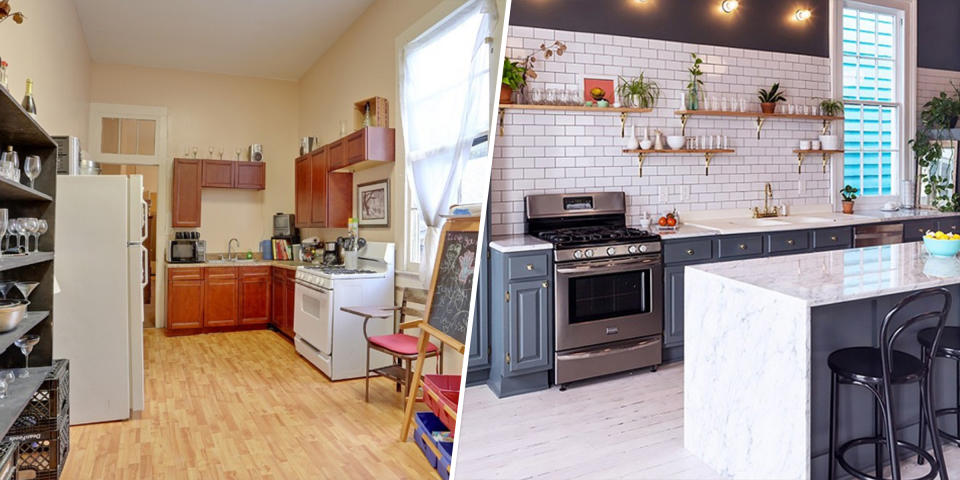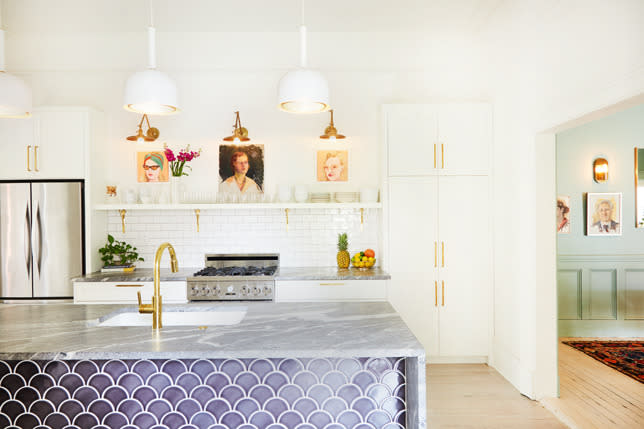Want to invest in a fixer-upper? Here's what you need to know
This year, home has become far more than just where the heart is. It's where millions of people have been working, sleeping, attending school, cooking and entertaining.
Droves have fled cities looking for quieter landscapes and more space, and home renovations are more desirable than ever. But the perfect home isn't always perfect from the get-go, and for some, taking on a renovation project could be the ideal move.
"A fixer-upper can be challenging but ultimately leads to a beautiful, tailored house with the added potential for great return on investment," Benjamin Massey, an architect and real estate developer focused in New Orleans and New York City, told TMRW.
For more like this, follow TMRW on Instagram at @tmrwxtoday.
To find out what a fixer-upper entails before taking the leap, TMRW spoke to Massey and real estate broker Janen Ardia. After all, we're not all Chip and Joanna Gaines!
Prepare for the process

While some folks may feel like a DIY pro after a few months spent at home, investing in a home flip is an intensive process that takes time, resources and usually some professional guidance.
"Fixer-uppers are definitely for people who enjoy a project. It can be fun, exciting and rewarding to purchase a house and customize it to your needs," Massey said.
To take on this endeavor, Massey, who is expert in architecture, design and real estate, advises understanding the steps and finding the right professional to help in each case.
The realtor: It can be a painstaking search to find the right project. A realtor can help locate a house with good bones in your desired neighborhood that meets most of the homeowner’s needs, while an architect/designer can finish carrying out the vision to accommodate the homeowner’s lifestyle and improve the property’s value.
The architect is trained to handle major renovations — from letting you know if walls can, or should, be removed, updating the curb appeal (how a home looks from the street), or letting you know if it is possible to fit that bidet into the bathroom (if not, there's always the attachable kind in case there's another toilet paper shortage).
The designer can also help assemble the color and finish selections needed to create a harmonious feeling throughout the home. A good designer can help you prioritize projects and provide alternative solutions that ultimately save you time and money. For example, a fresh coat of paint on old cabinets, some new countertops and fun lighting can completely transform the kitchen without getting into major renovations.
The contractor handles the building work, from basic carpentry to full renovations and additions. When looking to hire a contractor, it is important to get bids from multiple people and select someone you get along with. Massey generally speaks to at least three different contractors before selecting one for the project.
Find the right property

According to Ardia, the saying, "location, location, location," holds true in any market — and right now, houses are in high demand at premium prices with low mortgage rates and limited inventory. Homes in suburban or rural areas are of interest to many and it's important to find the right property, especially when considering resale.
"A level piece of property, preferably not on a well-traveled road and in an area where conveniences are plentiful, is your first step. A house that has the best potential is usually one that is desirable during most conditions in the market; a ranch, a colonial ... they both have excellent resale appeal," Ardia told TMRW.
It's also great to find a house with the potential to open the floor plan so that the main living area can be visible from most of the entertaining area.
Watch for red flags and hidden costs
According to Janen Ardia, who has 36 years of experience in real estate, red flags for flips include septic systems older than about five years (they should be tested either way), a home with electric heat and old windows. These are expensive to fix so unless you're prepared to drop thousands of extra dollars in addition to renovations, steer clear.
With older homes, Massey said there are typically hidden costs such as termite damage, rotten wood, busted pipes or old heating. Ventilation and air conditioning equipment can also add up. It's important to have a full inspection (or two) before jumping in.
Since repairs and renovations can be time consuming, consider it may be challenging to live in the house while it's under construction. If it's an option, it might be wise to tackle many of the larger renovations before moving in.
"A major rule of thumb with almost any remodeling project is to remember that it will typically end up costing more than you think; the price usually has a way of escalating once the project begins," Massey said. "However, when done thoughtfully, the homeowner will enjoy these upgrades while inhabiting the space, and these projects will most likely pay off later when they go to sell."
What are the most important rooms to fix up or look for in a fixer-upper?

The kitchen, the bathrooms and outdoor living space are the three most important areas of focus when planning your renovation, according to Ardia.
"Without a doubt, the kitchen is always the room you should look at and how you can make it even more appealing. Does it have the ability to be 'opened up?' Can an island be part of it? Plan on taking your cabinets to the ceiling so storage space is plentiful," Ardia said. "You don’t have to spend a fortune on quality, but most buyers are savvy when it comes to particle board cabinets and vanities or solid wood. Spend the extra money when flipping; it will make a difference."
If a home has carpeting throughout, plan on installing hardwood floors. In addition, spacious rooms are desirable and, particularly for larger suburban homes, at least two bathrooms plus a half-bath is something buyers typically look for.
"Since the pandemic, buyers are now imagining themselves staying home, working at home and vacationing at home. Sell the lifestyle and the house will go with it," Ardia recommended.
Ready to renovate? Follow Massey's key professional tips

Before Massey invests in a fixer-upper or designs one for a client, he creates a plan detailing the renovations room-by-room, each little wish or desire he or the client wants and all the repairs that need to be made. Before outlining your own, consider Massey's tricks of the trade:
Storage space is critical: It is important to plan for closets and areas where clutter can be hidden behind doors. Sometimes it might seem like a good idea to bust out a closet to increase the square footage in a room, but it's best to strongly consider what will be lost more than gained.
Attics are a great place to increase usable square footage in an old house: By running some new A/C ducts and drywall, you can create additional bedrooms, playrooms or a home office, which buyers are interested in now more than ever.
Lighting is a simple way to transform a space: Switching out existing light fixtures is a major way to update a room. Also, try putting dimmers at all light switches to control the lighting in the rooms throughout the day.
An addition, or renovation, to an existing house can add desired square footage, additional bathrooms, larger kitchens, extra bedrooms or home office space, and all-around updates to a house that has been neglected.

